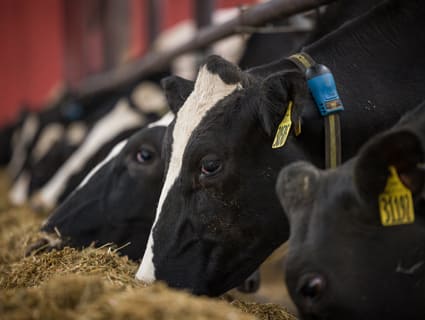How we helped McDonald’s source 100% cage-free eggs in U.S.
Read Time: 4 minutes
February 06, 2024
In September 2015, McDonald’s made a bold commitment: The restaurant chain would serve 100% cage-free eggs by 2025 in all its U.S. restaurants.
The cage-free egg commitment meant McDonald’s eggs would need to start coming from hens that live in a cage-free environment on the farm. No small task, considering McDonald’s purchased nearly 2 billion eggs in 2023 alone.
The larger challenge? Two billion cage-free eggs simply weren’t available in the U.S. at the time.
As the restaurant chain’s egg supplier, Cargill was there to help. We partnered with McDonald’s and egg producers to not only supply the eggs, but also to create a sustainable cage-free egg supply chain.
The result: McDonald’s has achieved its commitment to source 100% cage-free eggs in the U.S. — and through the power of partnership, we helped bring it to fruition two years ahead of schedule. That 2025 commitment? It’s being met today.
"Our journey to move to sourcing 100% cage-free eggs in the U.S. was a huge undertaking — made uniquely possible by our owner/operators, Cargill and their egg producers, and our supply chain working together as one team," says Bob Stewart, SVP, North America chief supply chain officer for McDonald’s. “I am incredibly proud of what we achieved together and the positive impact we will continue to make on the path toward a more sustainable future.”
The journey to cage-free eggs starts on the farm
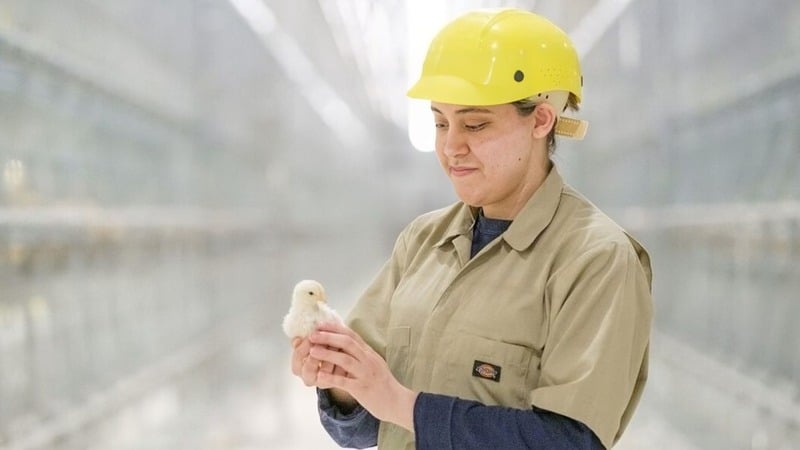 An employee at Forsman Farms in Howard Lake, Minnesota (U.S.), holds a hen in a cage-free environment on the farm. Forsman is one of the egg producers Cargill works with to supply McDonald’s with cage-free eggs.
An employee at Forsman Farms in Howard Lake, Minnesota (U.S.), holds a hen in a cage-free environment on the farm. Forsman is one of the egg producers Cargill works with to supply McDonald’s with cage-free eggs.
As an egg producer, Peter Forsman had never raised hens in a cage-free environment.
Cage-free hens live in an open space, allowing them to express their natural behaviors. This housing includes enrichments such as perches, scratch areas and nest boxes.
For farmers like Peter and his team, converting to cage-free meant learning how to care for the birds in this new environment, including the animal husbandry needed to raise a cage-free flock.
"As a family, we sat down and said, 'Are we going to be able to do it?,’ recalls Peter, owner of fourth-generation family farm Forsman Farms in Minnesota. “We had zero cage-free systems, and we knew this was going to be a big challenge."
Cargill and McDonald’s worked together to support the egg producers’ transition to cage-free. In partnership, we:
- Traveled to Europe with egg producers like Peter to see cage-free housing systems and learn from European farmers who had already made the transition to cage-free.
- Worked with producers to determine the changes and investments needed to build new farms or barns or to convert their farms to cage-free egg production.
- Used scientific research from the Coalition for Sustainable Egg Supply — Cargill and McDonald’s are founding members — to understand different housing types and address potential challenges with cage-free egg production.
- Hosted a yearly summit with our egg producers to share best practices on biosecurity and hen welfare.
Cargill also has provided nearly $850 million in financing since 2019 to help egg producers convert to cage-free and offered long-term contracts for their eggs to help them obtain financing from lenders.
Today, Forsman Farms and fellow egg suppliers like Herbruck’s Poultry Ranch in Michigan are making it possible for McDonald’s to source 100% cage-free eggs in the U.S. Herbruck’s is a fourth-generation family business, operating since 1958 and supplying Cargill for the McDonald’s system for decades.
"I really can't say enough about our partnership with Cargill and McDonald's,” says Herb Herbruck, president of Herbruck's Poultry Ranch. “They understand the difficulties that we have. They want to hear about our challenges, and they want to help us through them.”
An eggs-cellent team working behind the scenes
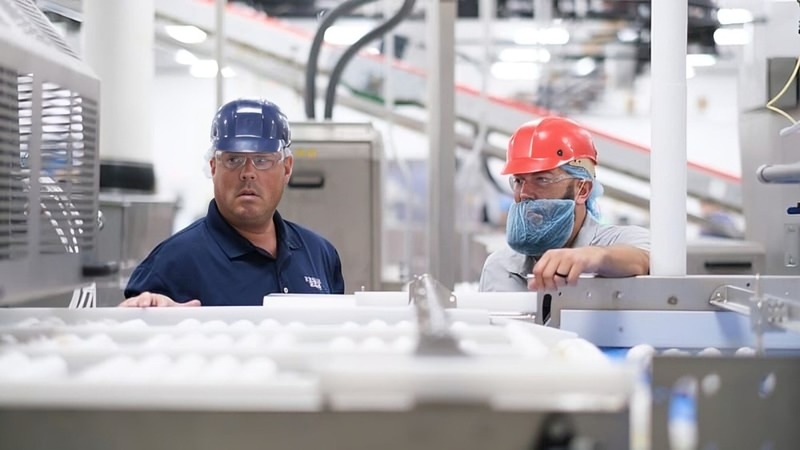 Employees at Forsman Farms in Minnesota. Cargill, McDonald’s and egg suppliers like Forsman Farms worked together to help achieve McDonald’s cage-free egg commitment.
Employees at Forsman Farms in Minnesota. Cargill, McDonald’s and egg suppliers like Forsman Farms worked together to help achieve McDonald’s cage-free egg commitment.
Helping McDonald’s cage-free eggs become a reality extended beyond the farm, too.
In addition to supporting egg producers, McDonald’s and Cargill also worked with suppliers, academics and other experts to ensure a successful transition.
That work included researching hen housing types, helping create global standards, ensuring legislative compliance and hosting an annual summit with egg suppliers to share best practices.
Not to mention, when the cage-free eggs leave the farm, Cargill also processes and ships them out of our U.S. facilities.
“When McDonald’s made the pledge to be cage-free in the U.S., Cargill, McDonald’s and our egg producers had to literally build the supply chain of cage-free eggs,” says Kristin Tupa, sustainability manager for Cargill’s North American protein business. “And now, it’s changing the industry.”
2 billion cage-free eggs, 2 years ahead of schedule
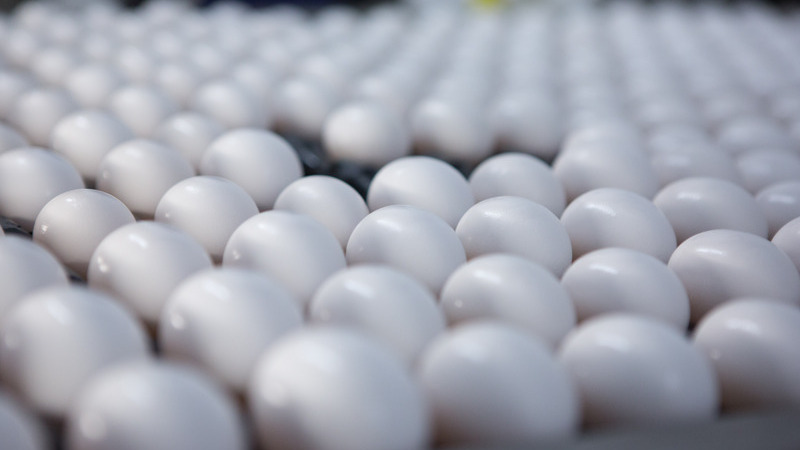 McDonald’s is now serving 100% cage-free eggs in all its U.S. restaurants, achieving its commitment two years ahead of schedule.
McDonald’s is now serving 100% cage-free eggs in all its U.S. restaurants, achieving its commitment two years ahead of schedule.
Today, all of McDonald’s U.S. restaurants serve 100% cage-free eggs — two years ahead of the 2025 target.
For McDonald’s, it’s a meaningful step in the company’s continued work to prioritize the health and welfare of animals in its supply chain, the company says.
For us, McDonald’s and egg producers like Peter, the cage-free journey continues.
“I’m just really excited that McDonald’s can get up and say they achieved this goal, and they achieved it before their deadline,” Peter says. “They can be super proud of the fact that they did it where many others couldn’t.”
More stories
A sweet mooooove: How Cargill upcycles Hershey's leftover chocolate into (nutritionist-approved) feed for cows
When Hershey approached us in 2011, we took on the company’s waste stream and began turning it into animal feed.

Leading the way: Removing trans-fatty acids from our food supply
Cargill has helped customers remove 1.5 billion pounds of industrially produced trans-fatty acids from our food supply
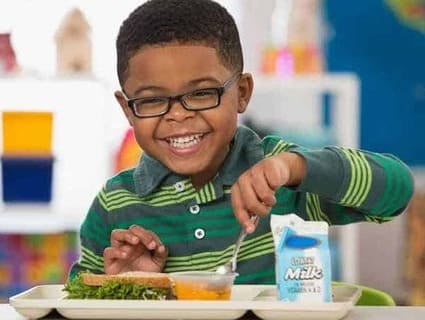
3 ways Cargill helps lunchtime heroes nourish kids
How we help foodservice operators serve lunches that are appetizing for kids and parents.

